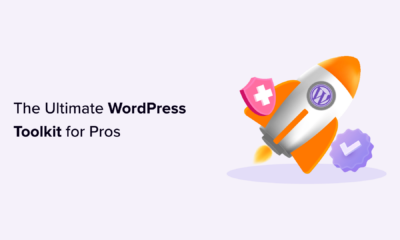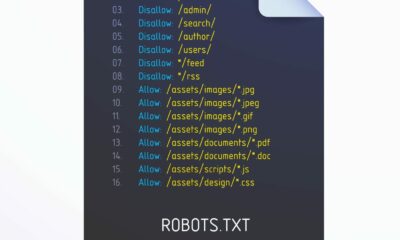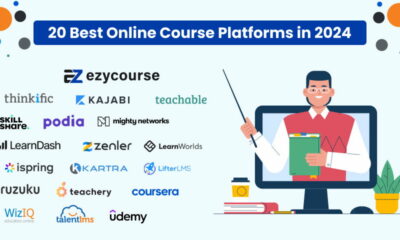MARKETING
The Ultimate Guide to Sending Your First Email Newsletter
Email marketing is an essential part of any online business’s digital marketing plan. But if it doesn’t result in instant conversions or purchases, is launching an email campaign even worthwhile? How do you keep track of your subscriber list? And where do you obtain subscribers, to begin with?
This post offers everything you need to know and provides step-by-step instructions for designing and sending newsletters.
What Is an Email Newsletter?
Emails sent out regularly, at equal intervals, are called newsletters. These can be designed in HTML or sent out as plain old text.
Email newsletters are an essential marketing tool for companies, and 81% of B2B marketers use them as their primary form of content marketing.
For the most part, newsletters focus on delivering helpful information to their readers, covering one topic or multiple themes.
Newsletters differ from transactional, autoresponders, and triggered/automated emails, although they may overlap from time to time. A successful email marketing campaign relies heavily on all of them. Thus newsletters should be utilized as a supplement rather than an alternative to these types of mail.
7 Tips To Write Your First Email Newsletter
Creating an email newsletter involves many tiny steps, but each one is critical to the campaign’s success. Here are 7 things to consider when writing your first newsletter email.
1. Determine the Goal
How do you choose the subject matter for your newsletter?
Identify a few essential subjects or a central theme for your newsletter and focus on a suitable call-to-action. Instead of linking to a random blog article about company updates, events, and PR announcements, focus on high-quality content organized around your chosen theme.
A clear emphasis allows your readers to understand what they’re reading and quickly direct them to actions you want them to take, such as reading a blog post or visiting a specific page on your website.
2. Consider Subscribing to an E-Newsletter Service
Every marketer should know that sending newsletters manually through Gmail, Outlook, or other email service providers is inefficient. These platforms and others like Google Workspace restrict the number of external recipients per message to 500 and the number of recipients per day to 3,000. Moreover, it doesn’t have any analytics, email templates, or segmentation options. So, you can’t depend on them.
On the other hand, email marketing tools offer various features to make your campaigns more successful. If you’ve ever used a drag-and-drop page editor on a content management system, the email newsletter tool should be a breeze to master. You can use it to send subscribers a stream of well-designed newsletters that have been optimized for their inboxes.
3. Decide on a Template
Choosing a template and writing content are the next steps after determining the purpose of your newsletter. If you have no prior experience with email design, it is highly recommended to check out pre-made templates. Many examples are available online, from invoice templates on Google Docs to newsletter wireframes that you can use to streamline email design. You’ll save yourself a lot of time and frustration this way!
Creating an email template that you can reuse is a smart move. Saving time and ensuring consistency are two advantages. Using a professional email template designer is the best way to develop a superb template because of its drag-and-drop editor.
In addition to the built-in templates, you can also develop a template with an email builder to design a personalized and branded look.
4. The Content Should Be Valuable and Interesting
Newsletters are designed to disseminate information. You must ensure that the information you intend to provide your audience is worth reading.
There are a few elements you should consider to see if the stuff you’re planning to publish provides value to your subscribers:
- Is the content relevant to your brand? If your company sells garden furniture, don’t write about politics or sports.
- Is the topic newsworthy? Nobody wants to read boring emails about company stats or receive the same “10% off on all stock” message repeatedly. Always make sure you have something interesting to say!
- Have you personalized the email? Personalized emails stand out in your subscribers’ inboxes and are more likely to be opened and clicked. You may not have the time or skills to create highly personalized emails yet, but you should at least use customers’ names to connect with your readers.
5. Set Time And Frequency
Sending emails too frequently or irregularly can upset your subscribers and cause them to forget why they signed up for your list. Just make sure you are consistent.
Avoid being a ghost, but also don’t be an email spammer. Decide when to send your email and how frequently to send them, then stick to the plan. Make sure you don’t send three emails in one week and none the next. Maintain a steady course of action in sending your newsletters.
Regarding timing your newsletter emails, best practices vary, but the general consensus is that Tuesdays, Wednesdays, and Thursdays work the best. Send your newsletters during the day, and make sure to mail out event notifications a few days earlier.
6. Build and Segment Your List
If you want a newsletter to be effective for your marketing efforts, you need subscribers first. Here are a few effective methods you can use to build your email list:
- Encourage the signing up of new members
- Run sweepstakes or contests
- Your website and landing pages should have data-capture forms and pop-ups installed
- Incorporate social media into your daily routine
But building a list is not enough; you also need to segment it to reach the right people. Segmenting your audience is the key to successful email marketing! You’re wasting your time even if you have excellent content that has no bearing on the audience you’re trying to reach.
Segmenting means dividing your list into smaller groups based on shared criteria. Most beginners segment their lists by demographic data such as age and gender. No matter how you decide to divide your audience, make sure you are sending your newsletters to people who’ve shown interest in reading them.
7. Maintain Legal Compliance
Before hitting “Send,” ensure your emails pass the standards for CAN-SCAM and GDPR.
- CAN-SPAM requires you to put your address and an obvious choice to unsubscribe in the footer.
- GDPR mandates email marketers to only deliver newsletters to those who have opted in. In other words, you can’t automatically tick the “add” box for European email subscribers. They must choose this option by themselves.
Conclusion
A scalable email marketing strategy must include email newsletters. Ensure your email newsletter follows the procedures outlined above, and you’ll be well on your way to growing your business.
When it comes to sending a well-designed, high-quality newsletter, it can take some time to get the hang of it. However, you can always tweak your guidelines and make changes if they don’t work out as you intended. Consider experimenting with new material or removing areas that don’t resonate with your readers.
You might find it challenging to create a high-quality newsletter initially, and fresh attempts may take some time to produce results. As long as you keep updating your process based on the response, you have nothing to worry about.









You must be logged in to post a comment Login